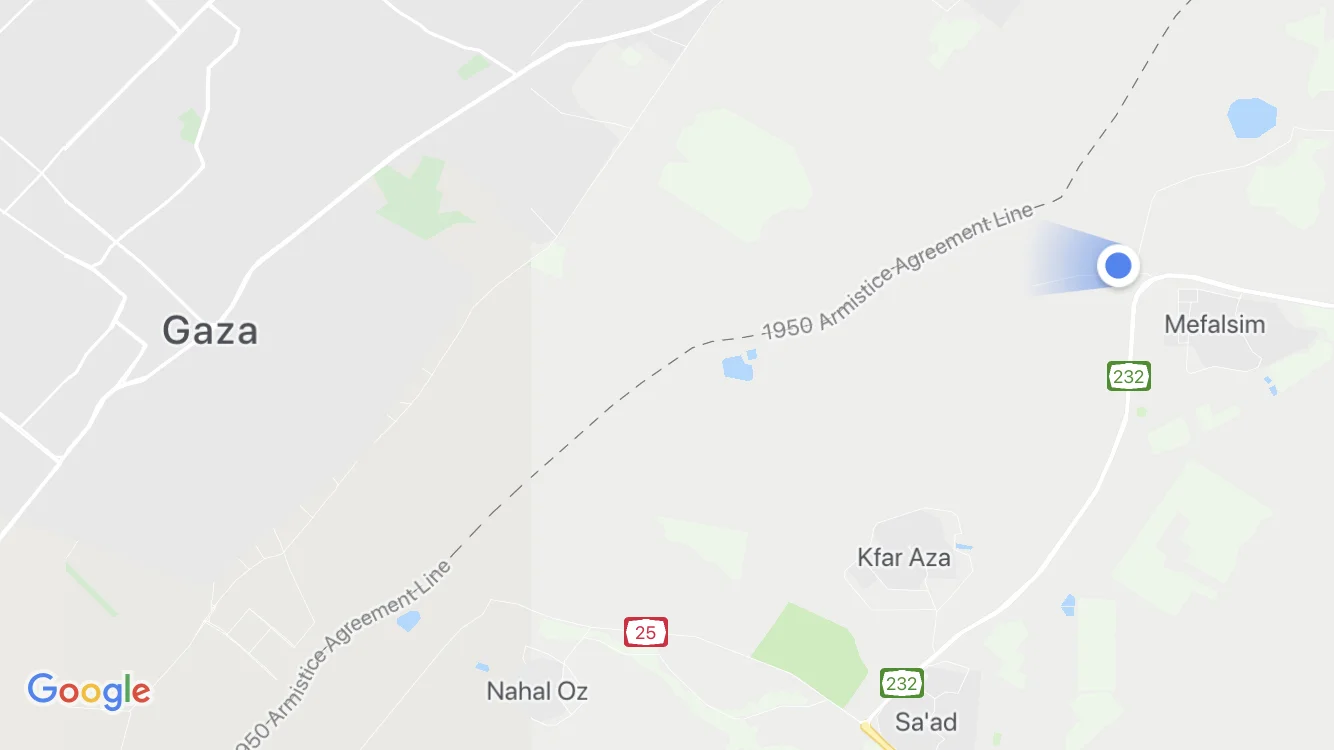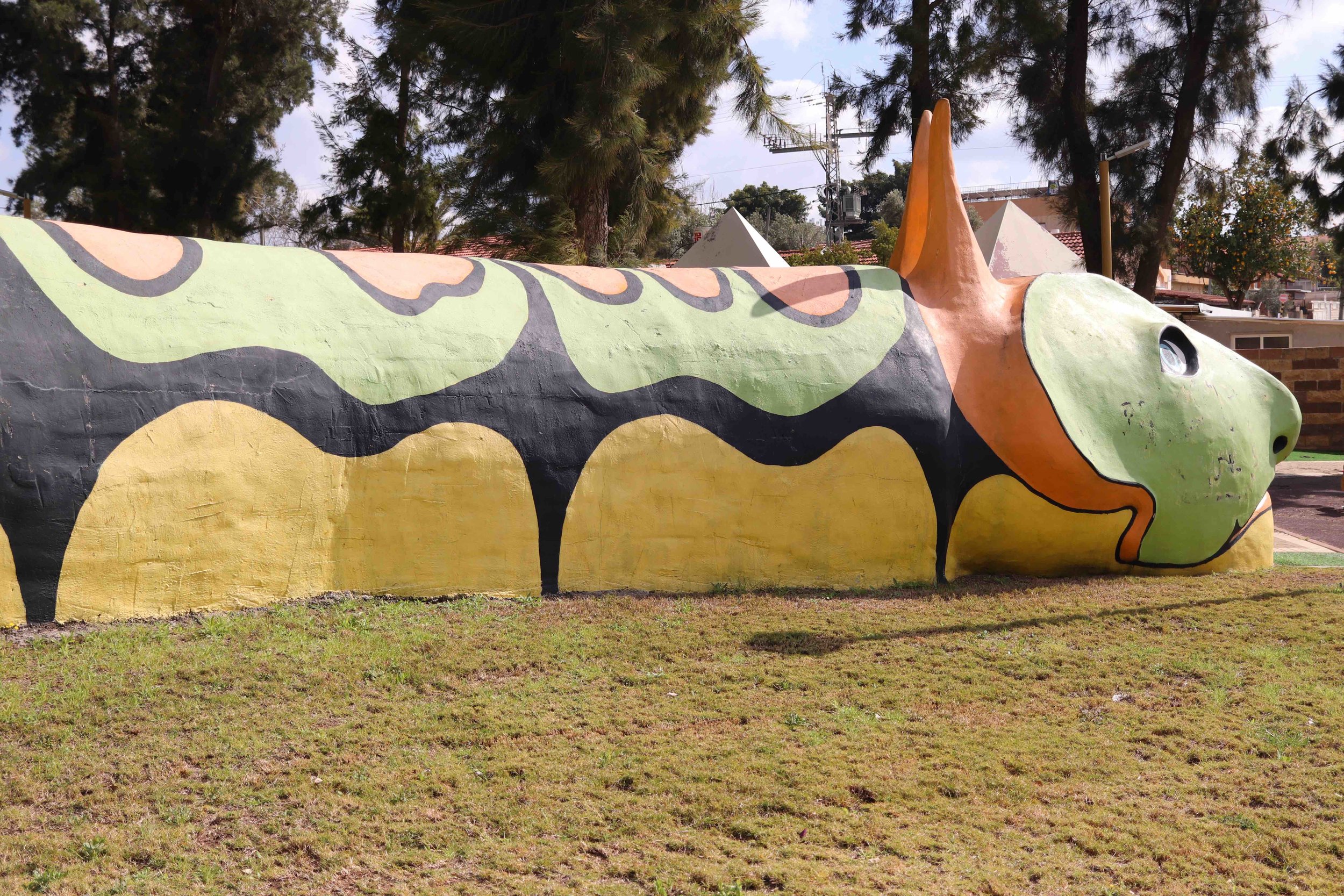Day 10 - Dead Sea, Sderot
The Dead Sea is the lowest point on earth. The water that flows into it only leaves by evaporation. That means the minerals carried in by the water stay, getting ever more concentrated by the century. This has a few consequences:
From this view, it’s easy to imagine the millennia that have passed since water began pooling here.
Israel’s number one export is the minerals found in the Dead Sea: potassium, bromide and phosphates. China is a big customer.
Nothing can survive in this concentrated toxic soup. That’s why it’s called the Dead sea.
You don’t sink when you swim in it. It’s the strangest feeling. In the water, you can put your hands by your side and touch your feet together and you still float vertically, like a fishing line bobber.
We were at the blue dot, a few hundred yards from the border separating Gaza and Israel.
From here we headed east toward the Gaza Strip. This was the final border we visited, after the West Bank, Jordan, Syria and Lebanon. (The only other border Israel has is with Egypt, but that’s too far south for this trip.) The border with Gaza is unpredictable and violent. When we visited in 2018, we casually hung out with two young Israeli soldiers - no threats at all. Two weeks after that, violence erupted and 15 people were killed. So today, we stayed farther away, but all in all, still pretty close.
On this clear day, the homes and businesses of Gaza City are easy to see. In between our spot at the Black Arrow Lookout and the border lie three barriers. In order from west to east:
A trench. The dirt is piled up to create berm behind which Israeli soldiers strategize.
A fence. This is the typical Israeli security fence that is able to detect when someone touches it or it’s breached. The sensors then pinpoint the potential danger and troops can be sent to investigate in that specific location.
Another security fence with sensors.
Looking across the open farmland from Israel toward Gaza.
Sharon Shelly talks about live in Sderot.
The Israeli towns near the border with Gaza are frequently subjected to rocket attacks. One of those towns is Sderot. Therapist Sharon Shelly told us many children who live there suffer from post-traumatic stress disorder because they are so often roused from bed or the classroom and have to scramble to a bomb shelter. When the bomb sirens go off, Israelis have about 30 seconds to get to safety. In fact, on the bus as we were approaching the Black Arrow lookout, we had a briefing on what to do if we heard a bomb siren.
Shelly spoke to us in a children’s park filled with what seemed to be colorful playground equipment. Instead, these structures also double as bomb shelters, decorated in a way that makes them appealing for children to enter.
Above: Playground sign: “When the red alert sounds, get into the shelter.”
Left: Park welcome sign.
Below: children’s bomb shelter.
Israeli bomb shelters near the Gaza Strip are decorated to be friendly to children.
We are now in the home stretch, staying in Tel Aviv for our last two days. These are the last opportunities for students to conduct interviews, gather video and put the final touches on their stories.
Some other photos from the day:
Sign on the road leading up and out of the Dead Sea. Strangely similar to the Snowmobile Crossing signs in Central New York. Unless you’re from there, you don’t expect them.
But then you see this:
If they didn’t know before, they surely know now. Broadcast journalism means lugging equipment everywhere you go. Here the students head out of the Dead Sea hotel to the bus.
Students at sunrise at 5:45 a.m. More clouds than we’d hoped for, but great colors anyway.











